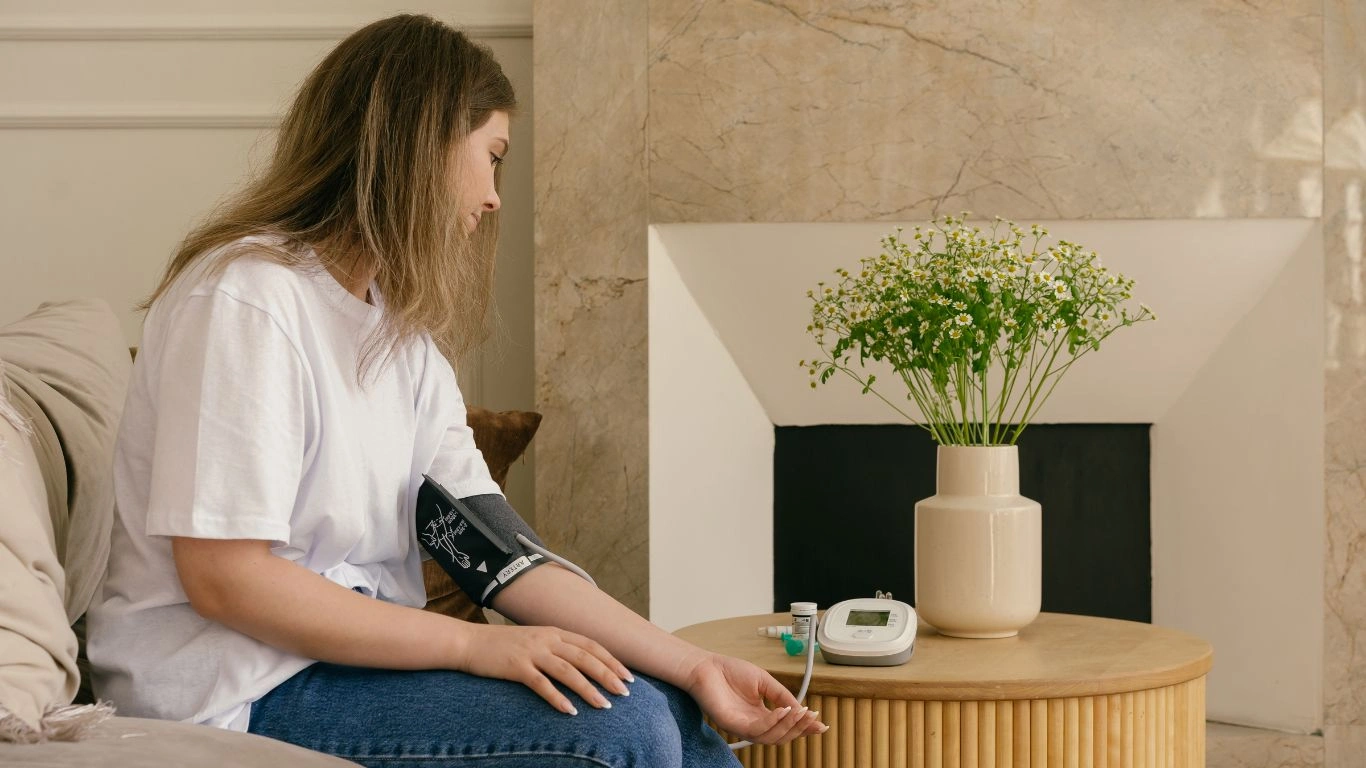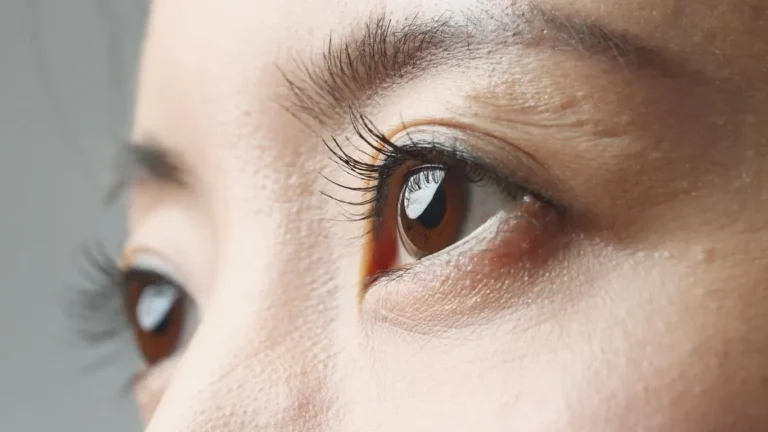Effective Hypertension Management: Control High Blood Pressure
If you’ve ever found yourself overwhelmed by the topic of effective hypertension management, trust me—you’re not alone. As an Internal Medicine physician who’s spent years in the trenches with patients trying to tame those stubborn blood pressure numbers, I’ve seen how confusing and frustrating it can get. I’m Gwenna, and in my day-to-day practice, hypertension isn’t just a condition I manage—it’s practically a character in every patient story. Some come in thinking they’re doing everything right, others didn’t even know they were hypertensive. There’s no one-size-fits-all fix, and that’s why it’s time we have a real talk about how to manage high blood pressure the right way, without getting lost in the noise.
Understanding the Real Enemy: What Hypertension Actually Is

Let’s break this down in plain English—hypertension, or high blood pressure, means the force of your blood against your artery walls is too strong, and if it stays that way, it can damage your heart, brain, kidneys, and eyes. That sounds dramatic, but it’s true. What makes it tricky is that you can feel perfectly fine for years, all while silent damage is happening inside your body. That’s what makes effective hypertension management so critical—*catching it early, treating it properly, and staying consistent.*
Blood Pressure Basics: Know Your Numbers
Okay, so here’s a quick refresher. When you see a blood pressure reading like 130/80 mmHg:
- Top number (systolic): Pressure when the heart beats
- Bottom number (diastolic): Pressure when the heart rests between beats
According to most guidelines, you’re dealing with hypertension if:
- Systolic is consistently above 130
- Diastolic is consistently above 80
I always tell my patients—don’t obsess over one reading. Look at the pattern. Your blood pressure fluctuates. It’s not a static number. Stress, sleep, caffeine, your posture, even the tightness of the cuff can throw it off.
What Really Works: Principles of Effective Hypertension Management

Now we’re getting into the meat of it. After treating hundreds (probably thousands) of patients over the years, I’ve learned that effective hypertension management is both science and lifestyle—a dance between medication and behavior change. But first, let’s talk about some truths that often get ignored.
Myth #1: “If I feel fine, I’m fine.”
Hypertension is sneaky. Most people feel completely normal even when their blood pressure is sky-high. That’s why it’s nicknamed the “silent killer.” I can’t count how many times someone told me, “But Doc, I feel great!”—right before their EKG or kidney panel came back screaming trouble.
Myth #2: “I’m too young for blood pressure problems.”
Nope. I’ve seen patients in their late 20s already dealing with early-stage hypertension. Genetics play a role, sure—but so does stress, poor sleep, salt-loaded diets, and way too much screen time and coffee. It’s not just a “grandpa problem” anymore.
Key Pillars of Effective Blood Pressure Control
- Consistent Monitoring: Home blood pressure monitors can be game-changers if used correctly. (More on this in a later section.)
- Targeted Medications: Not everyone needs meds, but if you do—there’s a strategy. I don’t just hand out pills like candy. I tailor them.
- Lifestyle Changes: The not-so-secret weapon. Small shifts lead to big wins.
The Role of Lifestyle in Keeping Blood Pressure in Check

Here’s where it gets interesting. I’ve watched some patients lower their blood pressure dramatically with just a few tweaks. It’s not about overnight transformation—it’s about progress that sticks. Here are a few examples from my clinic:
Patient A: The Salty Snacker
This patient didn’t think a bag of chips a day was “that bad.” But after cutting down processed snacks and choosing low-sodium options, her readings dropped by 10 points in three months. We didn’t change her meds—just her pantry.
Patient B: The Night Owl
This gentleman had perfect morning readings but skyrocketed in the evenings. Why? Lack of sleep, screen exposure, and late-night work stress. After we fixed his sleep hygiene and introduced wind-down routines, he started showing stable readings across the board.
Easy Lifestyle Adjustments That Actually Work
- Move more: Aim for at least 30 minutes of activity most days. Walking counts!
- Cut back on salt: Read labels. Sodium hides in unexpected places (like bread!).
- Manage stress: Deep breathing, mindfulness, hobbies—whatever calms your nervous system.
- Limit alcohol: A glass here and there? Fine. But nightly “unwind” drinks? Not helping your pressure.
- Quit smoking: If you need one more reason—this is it.
I’ll be honest: Not everyone wants to hear this part. Lifestyle change isn’t sexy. It’s not a magic pill. But it *is* powerful. And when paired with medication when needed? That’s where the magic happens.
Making Medications Work for You: The Right Way to Use Hypertension Drugs

Alright, let’s talk meds. This is where a lot of my patients either get overwhelmed or check out entirely. I totally get it—there’s a sea of blood pressure medications out there, and if you’ve ever glanced at your pharmacy receipt, you’ve probably seen names that sound more like a chemistry exam than medicine.
But here’s what I always emphasize in clinic: Effective hypertension management doesn’t mean throwing pills at a problem. It’s about tailoring your treatment to fit your body, lifestyle, and even your genes in some cases. And yes, sometimes it’s trial and error at the start. But we always get there with some patience and partnership.
Types of Hypertension Medications (and Why You Might Need One or More)
- ACE Inhibitors: Like lisinopril—great for kidney protection (especially in diabetics). But can cause a nagging cough in some people.
- ARBs: Like losartan—similar benefits as ACEs without the cough. A fan favorite among my patients.
- Calcium Channel Blockers: Amlodipine is a big one. Works well but can cause some ankle swelling. (We watch that closely.)
- Diuretics: Aka water pills like hydrochlorothiazide. Help flush out excess sodium and fluid—but yes, you’ll pee more. Especially early on.
- Beta Blockers: Often used if there’s a heart history too—like post-heart attack or fast heart rates. They’re not always first-line for straightforward hypertension anymore, but still useful.
Now, if you’re sitting there wondering why you’re on *two* or even *three* medications, let me reassure you—*that’s not failure.* Blood pressure often needs a combo to fully control it. I’ve had super-fit, healthy patients still need multiple meds because their vessels just like to stay tense.
How to Get the Most Out of Your Medication
- Take them consistently: Skipping doses is one of the biggest reasons I see people back in my office with out-of-control numbers.
- Same time every day: Set an alarm. Pair it with brushing your teeth or breakfast. Routine matters more than you think.
- Track your response: Jot down your readings. Bring them in. We adjust based on real-life data, not just clinic snapshots.
- Report side effects: Don’t tough it out silently. I’ve had folks quit meds because of something manageable, like mild fatigue or dizziness, when a simple switch could’ve solved it.
Home Monitoring: Why Your Cuff Is Your Best Friend

Let’s clear this up: if you’re serious about effective hypertension management, you need to monitor your pressure at home. The numbers we get in clinic are useful—but they’re just a snapshot. What really tells the story is what’s happening while you’re living your normal life.
White coat hypertension is real. I’ve seen patients spike 20 points just from the anxiety of being in a medical office. On the flip side, there’s masked hypertension—normal in clinic, elevated at home. That’s why I always recommend home monitoring if possible.
Choosing the Right Monitor
Not all devices are created equal. My go-to advice:
- Use an upper-arm cuff—wrist ones are less reliable.
- Pick a brand validated by your local or national hypertension society (ask your doc or pharmacist).
- Make sure the cuff fits your arm. Too tight or too loose = wrong readings.
How to Measure Like a Pro
- Sit quietly for 5 minutes before measuring.
- Feet flat on the floor, back supported, arm at heart level.
- No talking, no crossing legs, no checking after coffee or a workout.
- Take two readings, one minute apart. Record both.
I usually tell patients to check a few times a week, morning and evening, especially when we’re adjusting meds. Over time, we scale back—but consistency early on is gold.
Understanding Triggers and Fluctuations

This part always surprises people: your blood pressure isn’t static. It moves. A lot. And that’s totally normal to an extent.
I had a patient once who came in freaking out because her BP was 160/90 at work—but totally normal at home. Turns out, her boss was the main trigger (go figure). We didn’t medicate her more—we tackled the stress angle first. The right solution isn’t always more pills. It’s identifying the why.
Common Blood Pressure Spikes I See
- Caffeine overload: Some folks are more sensitive than they think. One cup = fine, but two or three? Big difference.
- Emotional stress: Anxiety, arguments, even driving in traffic can push you into temporary hypertensive zones.
- Dehydration: Yep, being too low on fluids can mess with your pressure too.
- Medication interactions: Some cold and flu meds, NSAIDs, or even certain herbal supplements can raise blood pressure.
I always encourage my patients to keep a BP diary. Track what you ate, drank, how you slept, how stressed you were. Patterns emerge—and that insight is way more powerful than a random clinic number.
When to Worry
Not every high number needs panic. But if your readings are consistently over 180/120—or if you have symptoms like chest pain, severe headache, vision changes, or shortness of breath—that’s a medical emergency. Don’t wait. Get help fast.
Otherwise, small fluctuations are part of life. What matters is your trend over time—not the occasional spike.
Long-Term Success: Turning Hypertension Management Into a Lifestyle

Here’s the truth no one tells you: managing hypertension isn’t about chasing numbers—it’s about building a rhythm. I’ve been in practice long enough to see what separates those who thrive from those who just get by. And guess what? It’s not perfection. It’s consistency. That’s the heart of effective hypertension management.
Whether you’re on medication or not, the long game is about weaving blood pressure care into your daily routine—without it feeling like a chore. The more natural it becomes, the more likely you are to stick with it for the long haul. And that’s where real change happens.
The “Little Wins” That Add Up Big
In clinic, I always tell patients to celebrate the small victories. Dropped 5 points off your systolic after cutting back on soda? That’s a win. Swapped evening wine for herbal tea three nights this week? Win. These aren’t just lifestyle changes—they’re habits that reduce your stroke risk, heart strain, and kidney damage over time. That’s huge.
- Meal prepping: Takes a bit of effort upfront, but once you’ve got low-sodium meals ready to go, you’ll be less tempted by drive-thru options.
- Walking buddies: Whether it’s your dog, your spouse, or your playlist—having a routine walk every day can lower your pressure and boost your mood.
- Mindful moments: Just five minutes of deep breathing a day can lower stress hormones that push your pressure up.
These changes don’t just help your numbers—they improve your quality of life. And honestly, that’s what I care about most. I’m not in the business of turning people into robots who live for their next BP check. I want you living your life—just with a bit more control and a lot less risk.
Patient Stories: Real Life Wins and Setbacks

Let me share a few moments from the clinic that stuck with me. Because behind every number on a chart is a real person with a story—and these are the ones that show how powerful effective hypertension management can be when it’s personal.
Michael, 54 – From Resistant to Empowered
Michael came in frustrated. Three meds, still high BP, and honestly? He’d almost given up. We reviewed his routine and found out he was taking his meds inconsistently—sometimes skipping morning doses because of his night shifts. After syncing his meds with his sleep schedule and adding short daily walks, we saw a 15-point drop in his systolic pressure over six weeks. He told me, “I didn’t need more pills. I needed a plan.”
Sophia, 37 – Young, Fit, and Still Hypertensive
Sophia’s case reminded me how hypertension doesn’t always “look” like we expect. She was athletic, ate well, no family history. But her numbers were creeping up. After we ruled out secondary causes, it came down to stress and overtraining. We adjusted her workout intensity, built in recovery days, and added mindfulness breaks at work. Her BP normalized within a few months—without meds.
James, 68 – Slow and Steady
James didn’t make drastic changes. He didn’t overhaul his life overnight. But he did something better: he stayed consistent. Took his meds daily, tracked his pressure, reduced salt slowly, and started taking neighborhood strolls after dinner. One year in, he’s down 20 pounds and off one medication. That’s the power of small steps over time.
Resources to Keep You On Track
You don’t have to go this alone. Here are some tools and sources I often recommend to my patients to keep them informed and supported:
- NIH – Authoritative info on hypertension and lifestyle strategies backed by research.
- Health.com – Great for lifestyle tips and patient-friendly wellness ideas.
- American Heart Association – Offers practical guides, diet tips, and risk calculators.
And of course, don’t underestimate the value of a simple notebook or blood pressure tracking app. The act of recording your numbers builds awareness—and that’s half the battle won.
Final Thoughts on Building a Hypertension-Friendly Life
At the end of the day, managing blood pressure isn’t a “fix it and forget it” kind of deal. It’s a lifestyle—one that gets easier the more you live it. My role as a physician is to help guide, encourage, and educate—but the real magic happens in the everyday decisions you make. Whether it’s what you eat, how you move, how you sleep, or how you breathe when life gets tough—it all matters.
And let me tell you—there’s nothing more rewarding than watching a patient take control of their health. You don’t have to be perfect. You just have to keep showing up for yourself, day after day. That’s effective hypertension management in its truest form.
Disclaimer
This article is for educational purposes only and is not intended to replace medical advice. Always consult your healthcare provider before making any changes to your treatment or lifestyle.

Dr. Gwenna Aazee is a board-certified Internal Medicine Physician with a special focus on hypertension management, chronic disease prevention, and patient education. With years of experience in both clinical practice and medical writing, she’s passionate about turning evidence-based medicine into accessible, actionable advice. Through her work at Healthusias.com, Dr. Aazee empowers readers to take charge of their health with confidence and clarity. Off the clock, she enjoys deep dives into nutrition research, long walks with her rescue pup, and simplifying medical jargon one article at a time.





